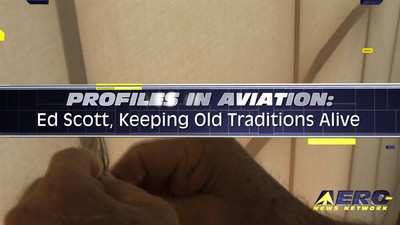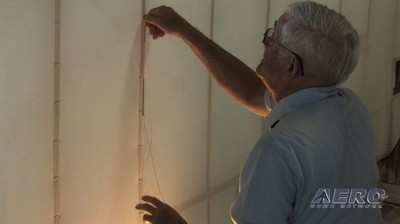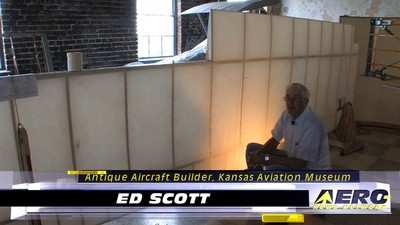Mon, Mar 22, 2010
The Kansas Aviation Museum is more than just a showcase for
Wichita’s rich aviation history; it is history. Listed on the
National Register of Historic Places, the museum is housed in
Wichita’s original municipal airport terminal. Dedicated on
March 31st, 1935, the Wichita Municipal Airport served as a major
mid-continent stopover for commercial operations as the last stop
before crossing the Rockies to Denver or Los Angeles. At its peak
in 1944, the airport was one of the busiest in the nation with
take-offs or landings occurring every 90 seconds. Wandering the
museum, visitors are immediately transported back to the glory days
of aviation, surrounded by grand terrazzo halls and art-deco
design. Nearly every aviation and entertainment legend of the era
roamed the buildings halls, from Howard Hughes and Fred Astaire to
Charles Lindbergh and Amelia Earhart.

With the United States entry into World War II, an explosion in
aviation manufacturing in Wichita altered the fate of the building.
Tens of thousands of aircraft were built in Wichita for the War
effort and the airport became a central location for flight-testing
and military supervision. On September 16th, 1947, the government
established the United States Air Force as a separate element of
the United States armed forces; by 1951, the USAF took over the
Wichita Municipal Airport for pilot training on B-47s, B-36s, and
eventually B-52s. For the next 30 years, the USAF and the Kansas
Air National Guard used the location as Building One of the
McConnell Air Force Base. In 1984, however, the USAF abandoned the
building.

For six years, the historical location sat empty and partially
gutted; after being leased by the City of Wichita to the Wichita
Aeronautical Historical Association in the late 1980s, volunteers
painstakingly began restoration efforts that continue to this day.
On April 19th, 1991, the Kansas Aviation Museum officially opened
to the public displaying an extraordinary collection of Kansas and
national aviation history.

The museum houses a world-class collection of rare aircraft,
aircraft engines, and archive documents including the entirety of
the original FAA identification cards from 1927 until 1994. In
addition, volunteers have successfully restored such one-of-a-kind
aircraft as a 1934 Stearman Model 73/Navy NS-1 Trainer and 1927
Swallow. Restoration continues through the astonishing efforts of
the museums dedicated staff and generous donations from historical
and aviation enthusiasts alike.
More News
Aero Linx: Transport Canada We are a federal institution, leading the Transport Canada portfolio and working with our partners. Transport Canada is responsible for transportation p>[...]
Gross Navigation Error (GNE) A lateral deviation from a cleared track, normally in excess of 25 Nautical Miles (NM). More stringent standards (for example, 10NM in some parts of th>[...]
From AirVenture 2017 (YouTube Edition): Flight-Proven Booster On Display At AirVenture… EAA AirVenture Oshkosh is known primarily as a celebration of experimental and amateu>[...]
Aircraft Parachute System (CAPS) Was Deployed About 293 Ft Above Ground Level, Which Was Too Low To Allow For Full Deployment Of The Parachute System Analysis: The day before the a>[...]
Also: 48th Annual Air Race Classic, Hot Air Balloon Fire, FAA v Banning 100LL, Complete Remote Pilot The news Piper PA-18 Super Cub owners have been waiting for has finally arrived>[...]
 ANN's Daily Aero-Linx (06.29.25)
ANN's Daily Aero-Linx (06.29.25) ANN's Daily Aero-Term (06.29.25): Gross Navigation Error (GNE)
ANN's Daily Aero-Term (06.29.25): Gross Navigation Error (GNE) Classic Aero-TV: Anticipating Futurespace - Blue Origin Visits Airventure 2017
Classic Aero-TV: Anticipating Futurespace - Blue Origin Visits Airventure 2017 NTSB Final Report: Cirrus SR22
NTSB Final Report: Cirrus SR22 Airborne Affordable Flyers 06.26.25: PA18 Upgrades, Delta Force, Rhinebeck
Airborne Affordable Flyers 06.26.25: PA18 Upgrades, Delta Force, Rhinebeck





